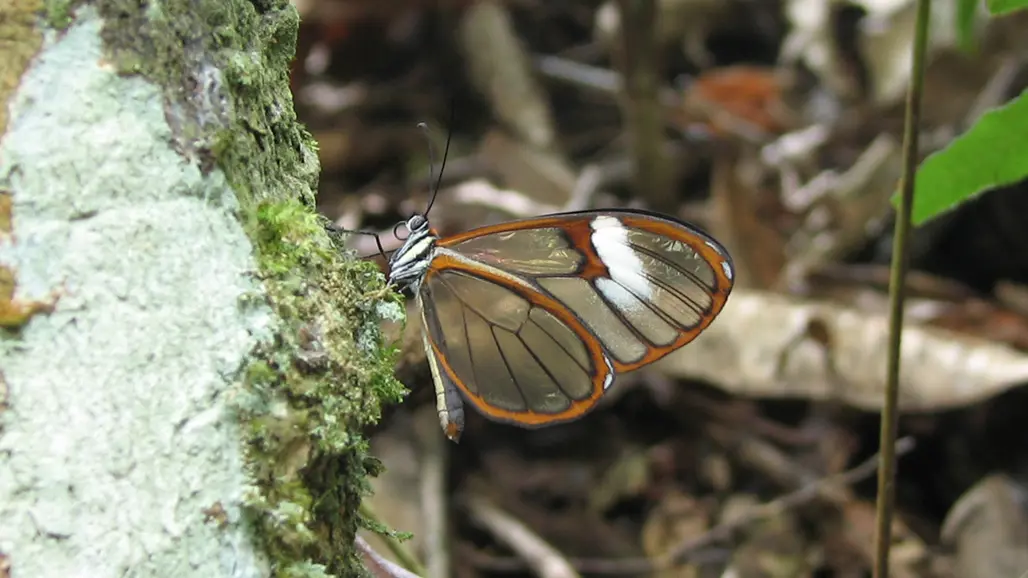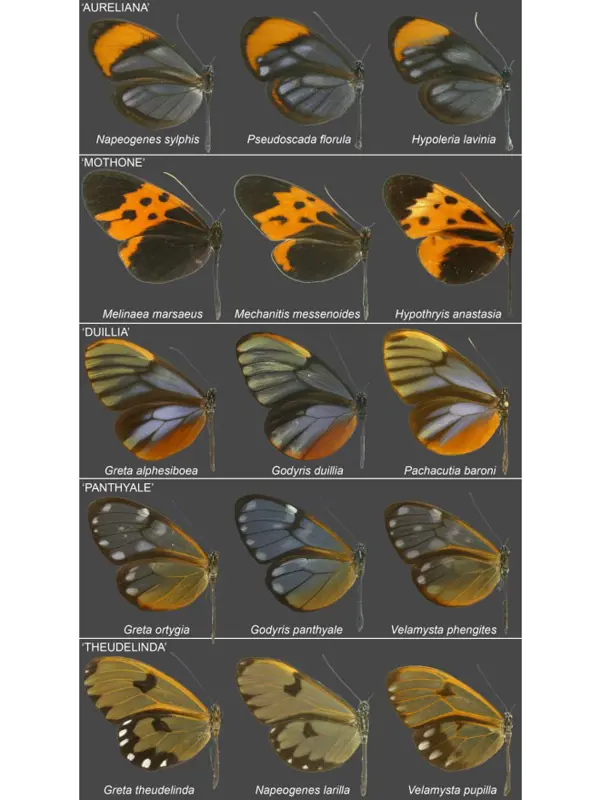
Researchers traced butterfly color patterns back in time
Müllerian mimicry is a mutualistic strategy where species benefit from sharing a warning signal by enhancing predator learning thus reducing the risk of attacks on all species involved. Researchers at SLU have now studied how these color patterns have evolved in a group of butterflies
Müllerian mimicry is a fascinating example of natural selection in action. Multiple species, toxic or unpalatable, evolve under selection towards similar color patterns used as warning signal for their predators.
This form of mimicry, first described by German naturalist Fritz Müller in 1879, has independently evolved in various animal groups, including butterflies, frogs, and even snakes. Among butterflies, Ithomiini are a key example of this evolutionary strategy, with nearly 400 species forming complex mimicry networks in the tropical rainforests of Central and South America.
Magic trait?
Until now, research had mainly focused on the evolution of Müllerian mimicry between local populations over recent periods, and painted Müllerian mimicry as a “magic trait” able to accelerate evolution and even the formation of new species.
“But Ithomiini have been involved in mimicry for 26 million years!” says Nicolas Chazot, researcher at the Department of Ecology, who led the study. Henceforth, the question is: can we see the influence of mimicry on the dynamics of evolution at a much larger time scale?
Researchers gathered data for 339 species of Ithomiini butterflies and identified 44 distinct mimicry rings—groups of species sharing the same warning signals. Strikingly, when some warning colors were found in a single species, others were shared amongst more than 70 different species.
Phylogenetic trees as time machines
To travel back in time, 26 million years ago, they used phylogenetic trees, which provide two key information: how and when different species evolved apart from each other. Combined with mathematical models of evolution, they were able to tell when these warning color patterns appeared and evolved in the past.
Researchers found that, even though mimetic interactions undoubtedly influenced the evolution of Ithomiini, the diversity and structure of interactions today can largely be explained by mechanisms independent from it.
“Time for example, is the main explanation for why some warning signals are more prevalent that others: they are just older, leaving more time for species to acquire that same color pattern” says Nicolas Chazot. Researchers identified however, what they interpreted as ecological constraints to the evolution of mimicry.
Fewer and fewer new color patterns
“First, we see that over time fewer and fewer new color patterns appeared. Second, we see that the probability that new species acquire a preexisting warning signal decreases when many species already share the same warning signal” explains Nicolas Chazot.
In parallel, the researchers found that the warning signals shared by the most distantly related species within Ithomiini were the same that can be frequently found outside Ithomiini, in other butterflies and even some moths.
“The implications of this result are very interesting. We either found color patterns that existed before butterflies and moths diverged, or color patterns that can be easily reproduced by many species that do not necessarily share the same genes.”

Scientific article
Contact
-
PersonNicolas Chazot, Senior LecturerNJ, Insect Ecology Unit